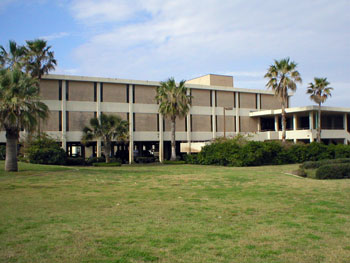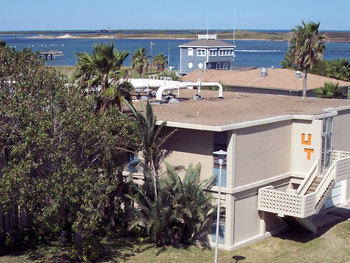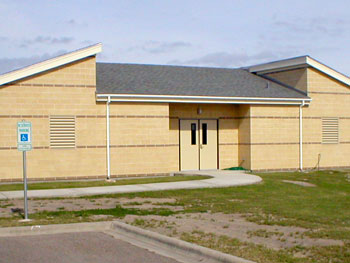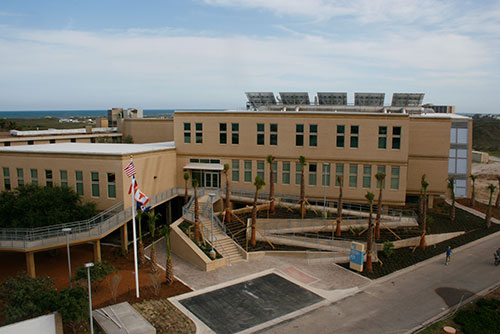UTMSI's Severe Weather Action Plan 2023
The Institute's main campus is located on 72 acres of beach-front land, at the mouth of the Aransas Channel and the shores of the Gulf of Mexico. It is a complete campus including laboratories, classrooms, offices, a resource center, dormitories, and a cafeteria. In addition to the typical campus structures, the Institute also has public spaces: a visitors center; aquaria; an auditorium; and a 3.5-acre Wetlands Education Center. The Estuarine Research Center, is a LEED Gold-designated building (Leadership in Energy and Environmental Design) that houses the headquarters of the Mission-Aransas National Estuarine Research Reserve.
No marine lab would be complete without a marina - UTMSI has a five-acre boat basin which provides quick access for our research vessels to both the bay systems and the Gulf of Mexico. The basin has been certified as a Clean Texas Marina by voluntarily adopting practices and measures to control pollution and embrace the conservation ethic of individual responsibility for healthy land and water.
A new research pier allows direct access for research projects in the Aransas Pass tidal inlet connecting the Gulf with the bays. This 300-foot pier has a 1200 sq. ft. lab at its base and a 150 sq. ft. instrument room at the end. The pier also has an electric winch for deploying sampling equipment such as plankton nets and large-mesh tide traps to study fluxes of biota through the inlet.
A mile west of the main campus is the Port Street Campus which includes the Fisheries and Mariculture Laboratory (FAML) and the Center for Coastal Ocean Science on 10 acres adjacent to the ship channel. This facility includes four large laboratories which provide for temperature and photoperiod control. The FAML complex provides facilities for research on the spawning and rearing of marine finfish and crustaceans and affords unique opportunities for research utilizing captive animals.
Both the main campus and the Port Street campus have office and laboratory space available for visiting scientists. For public spaces please see Visit and Learn.












